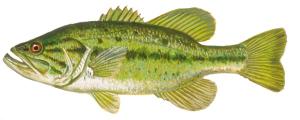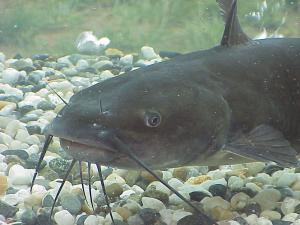#Mercury #Contamination of #Fish in Bartlett Lake, Arizona

Largemouth Bass

Channel Catfish
Here is another threat to Arizona wildlife. Because it threatens humans, the state government is acknowledging it publicly. According to an email sent this morning by the Arizona Game and Fish Department (AZGFD), “the Arizona Department of Environmental Quality (ADEQ), in association with the AZGFD, has issued a fish consumption advisory recommending that people limit consumption of channel catfish and largemouth bass caught from Bartlett Lake [an artificial reservoir on the Verde River] in Maricopa County. ADEQ is issuing this advisory because recent fish tissue samples from Bartlett Lake contained elevated levels of mercury.”
“ADEQ recommends that adults limit consumption of channel catfish and largemouth bass to 2.4 ounces (uncooked weight) per week and children 12 years of age and under limit consumption to two ounces per month (uncooked weight). This advisory does not limit the use of this water body for fishing, bird watching, swimming, or other recreational uses. In general, the level of contaminants in fish is several folds higher than levels found in water.”“Any health risks associated with eating fish from this advisory area are based on long term consumption and are not representative of risk from eating fish occasionally. Fish are an excellent source of protein and can be an important part of a healthy, diverse diet as they are low in saturated fat and high in omega-3 fatty acids. The American Heart Association recommends that individuals eat at least two fish or seafood meals weekly.”

What is the Origin of Mercury?
Mercury washes into streams and lakes after exposure by floods, mining, and construction. Some probably comes from roads and urban wastes around and upstream from the lake. And some comes from power plants in and around Arizona: “Mercury is one of the most harmful pollutants faced by fish and wildlife. Toxic mercury is released from coal burning power plants across the country and accumulates in rivers, lakes, and forests.” — National Wildlife Federation.
Mercury is just one of many pollutants that humans feed into the Verde River and Bartlett Lake. Worldwide, human wastes are a major cause of wildlife disease and decline. ADEQ makes little or no effort to regulate the sources of pollutants, but as wildlife declines and extinctions become public knowledge, the agency may have to step up and face the developers and . . . . Well, that’s not going to happen. Not until private citizens force their political representatives to ignore their donors and future employers and direct the agency to say “enough is enough” without fear of retribution.
References
- Driscoll, et al. 2006. Conservation assessment and strategy for the Bald Eagle in Arizona. Tech Rept 173, Nongame and Endangered Wildlife Program, AZGFD, Phoenix, AZ, 69 p.
- ADEQ. 2015. Arizona Fish Consumption Advisories – July 2015. Lists 15 waterbodies of concern.

